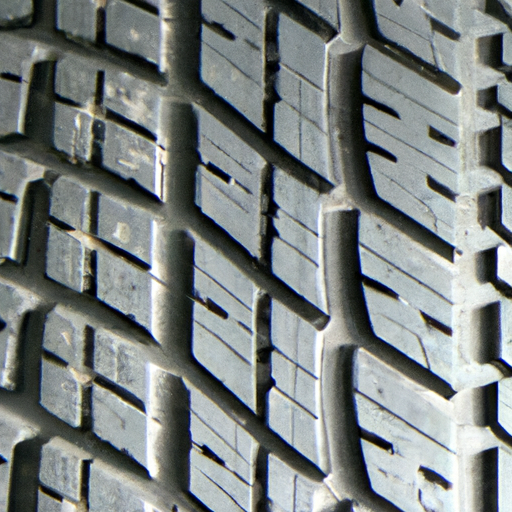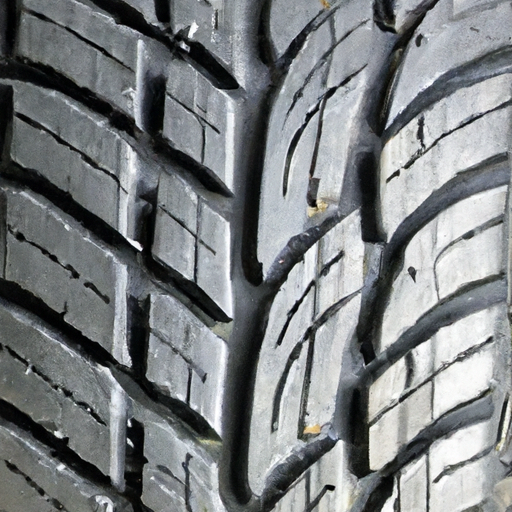When it comes to tire maintenance, one question that often pops into our minds is, “How frequently should I rotate my tires?” Well, the answer is not as straightforward as one might think. Proper tire rotation is crucial in maintaining even wear and promoting optimal performance. In this article, we will explore the factors that influence the frequency of tire rotation and provide you with expert recommendations to ensure your tires last longer and provide a smoother, safer ride. So sit back, relax, and let’s unravel the secrets to tire rotation!
Factors to Consider
Type of Tires
When considering how frequently you should rotate your tires, the type of tires you have installed on your vehicle is an important factor to take into account. Different tire types, such as all-season, summer, or winter tires, have varying wear patterns and characteristics. Understanding the specific needs of your tires will help you determine the optimal rotation schedule.
Driving Habits
Your driving habits also play a role in how often you should rotate your tires. If you frequently drive long distances or engage in activities that put added stress on your tires, such as off-roading or towing heavy loads, they may wear out faster. In these cases, more frequent tire rotation is advisable to ensure even wear and maximize their lifespan.
Road Conditions
The condition of the roads you regularly drive on can impact your tire wear. Rough and uneven road surfaces can cause your tires to wear unevenly, leading to the need for more frequent rotations. Additionally, if you frequently encounter potholes or debris, it can cause damage to your tires, making rotation essential to prevent further harm.
Manufacturer’s Recommendations
Consulting the Manual
One of the best sources of information regarding the recommended tire rotation interval is your vehicle’s manual. The manufacturer provides specific guidelines based on their tire testing and engineering expertise. It is important to consult the manual to determine the rotation pattern and mileage or time intervals they suggest for your particular vehicle.
Following the Mileage
Many manufacturers recommend tire rotation intervals based on mileage. This typically ranges between 5,000 to 8,000 miles. By adhering to these mileage guidelines, you can help ensure that your tires wear evenly and maintain optimal performance. However, keep in mind that different vehicles and tire types may have varying mileage recommendations.
Considering Time
In addition to mileage, some manufacturers also recommend tire rotations based on time. Even if you haven’t reached the recommended mileage interval, it may be necessary to rotate your tires if a certain time period has elapsed. This is especially important for vehicles that are driven infrequently or for those subjected to extreme weather conditions.
Considering Both Mileage and Time
To strike a balance between mileage and time intervals, some manufacturers recommend considering both factors when deciding on a tire rotation schedule. For example, they might suggest rotating your tires every 6 months or 1 year, regardless of mileage. This approach ensures that your tires receive regular attention regardless of whether you’ve reached the recommended mileage interval.

General Guidelines
Every 5,000 to 8,000 Miles
As mentioned earlier, a common and generally safe guideline is to rotate your tires every 5,000 to 8,000 miles. This mileage range helps prevent uneven wear and maximize the overall lifespan of your tires. However, it’s important to factor in other considerations, such as your specific vehicle and tire type.
Every 6 Months to 1 Year
If you don’t drive much or your vehicle is not subjected to heavy use, it may be appropriate to rotate your tires every 6 months to 1 year. This time-based interval ensures that your tires receive proper care and attention, even if you haven’t reached the recommended mileage interval.
Every Other Oil Change
Another convenient guideline for tire rotation is to perform it every other time you get an oil change. Since most vehicles require an oil change every 3,000 to 5,000 miles, this can serve as a useful reminder to rotate your tires as well. However, it’s important to note that this guideline may not be suitable for all vehicles, so it’s best to consult your manual or a professional.
Before and After Winter Season
The winter season can be particularly harsh on your tires due to icy roads, salt, and other road treatments. To ensure your tires are in optimal condition for winter driving and to mitigate any damage caused during the season, it is recommended to rotate your tires before and after the winter months. This will help maintain their performance and increase their longevity.
Signs that Indicate Tire Rotation is Needed
Uneven Tire Wear
One of the most common signs that indicate the need for tire rotation is uneven tire wear. If you notice that your tires are wearing down more quickly on certain areas or edges, it suggests that the weight distribution is not balanced. Regular rotations can help address this issue and ensure even wear across all tires.
Vibrations
If you start feeling vibrations while driving, especially at high speeds, it may be a sign that your tires need to be rotated. Uneven tire wear can cause imbalances and lead to vibrations, which can affect your driving comfort and potentially indicate more serious tire issues. Rotating the tires can help eliminate or reduce these vibrations.
Pulling to One Side
When your vehicle pulls to one side while driving, it may be due to the tires wearing unevenly or having different levels of grip. Regular tire rotations can help distribute the wear and maintain better alignment, resulting in a more balanced driving experience without any pulling.
Reduced Fuel Efficiency
If you notice a decrease in your vehicle’s fuel efficiency, it could be due to uneven tire wear. Tires that are not rotated regularly can develop patterns that increase rolling resistance, requiring more energy from your vehicle’s engine to maintain speed. By ensuring proper tire rotation, you can help maximize your fuel efficiency.

Benefits of Regular Tire Rotation
Even Tire Wear
Perhaps the most obvious benefit of regular tire rotation is achieving even tire wear. By rotating your tires at regular intervals, you can help distribute the wear more evenly across all four tires. This promotes better handling, improved vehicle performance, and longer overall tire life.
Extended Tire Lifespan
By promoting even tire wear, regular tire rotation can significantly extend the lifespan of your tires. Uneven wear can lead to premature tire replacement, costing you more money in the long run. By following a consistent rotation schedule, you can get the most out of each set of tires, saving you from the added expense of frequent replacements.
Improved Vehicle Performance
Properly maintained tires have a direct impact on your vehicle’s performance. Regular rotation ensures that all four tires have the same tread depth and wear pattern, resulting in better traction, stability, and handling. This not only improves your driving experience but also enhances overall vehicle safety.
Enhanced Safety
Tire rotation is an essential safety measure. Uneven wear can lead to tire blowouts, decreased handling capabilities, and reduced grip on wet or slippery surfaces. By rotating your tires regularly, you minimize the chances of experiencing these issues, ensuring a safer driving experience for you and your passengers.
Rotating Tires by Pattern
Front-to-Back Rotation
Front-to-back rotation involves moving the front tires to the rear and vice versa. This pattern is commonly used for vehicles with either front-wheel drive (FWD) or rear-wheel drive (RWD). By switching the tires from front to back, you can balance the wear between the drive wheels and the non-drive wheels.
Side-to-Side Rotation
Side-to-side rotation refers to moving the tires on one side of the vehicle to the other side. This pattern is often used for vehicles that have tires with different sizes or wear patterns on the front and rear axles. By swapping the tires from side to side, you can achieve a more uniform wear and prolong their overall lifespan.
Cross Rotation
Cross rotation is a combination of front-to-back and side-to-side rotations. It involves moving the front tires to the opposite sides of the rear axle, while the rear tires move straight forward to the front axle. This pattern is commonly used for vehicles with different tire sizes on the front and rear axles. Cross rotation helps equalize the wear and maximize the performance of all four tires.

Rotating Tires by Vehicle Type
Front-Wheel Drive (FWD) Vehicles
For front-wheel drive vehicles, the front tires wear more quickly than the rear tires due to the weight distribution and power delivery. To ensure even wear, it is recommended to perform front-to-back rotations. Move the front tires to the rear axle and switch their sides, and move the rear tires straight forward to the front axle. This pattern helps balance the wear between the drive wheels and the non-drive wheels.
Rear-Wheel Drive (RWD) Vehicles
In rear-wheel drive vehicles, the rear tires may wear more quickly due to being responsible for propulsion. To achieve even wear, it is advisable to perform front-to-back rotations. Move the rear tires to the front axle and switch their sides, and move the front tires straight back to the rear axle. This pattern helps balance the wear between the drive wheels and the non-drive wheels.
Four-Wheel Drive (4WD) and All-Wheel Drive (AWD) Vehicles
With 4WD and AWD vehicles, all four tires wear more evenly due to power being distributed to all wheels. However, to maintain uniform wear and ensure optimal performance, it is recommended to follow the vehicle manufacturer’s recommendations. Some may suggest a modified version of front-to-back or cross rotation patterns specific to 4WD or AWD systems. Consulting your manual or a tire professional is crucial to determine the appropriate rotation pattern for your particular vehicle.
DIY Tire Rotation vs. Professional Service
DIY Rotation
Performing tire rotations yourself is certainly an option if you have the necessary tools, skills, and knowledge. DIY tire rotation can save you money and give you a sense of accomplishment, as it is a relatively straightforward process. However, it’s important to ensure you follow the appropriate rotation pattern and torque specifications provided by the vehicle manufacturer. If you’re unsure or uncomfortable performing the rotation yourself, it’s always best to seek professional assistance.
Professional Service
Seeking professional tire rotation services guarantees that the task is performed correctly and efficiently. Tire service professionals have the expertise, experience, and specialized equipment to perform the rotation accurately. Additionally, they can inspect your tires for any other potential issues, such as alignment or tire pressure problems. While professional services come at a cost, the peace of mind and convenience they provide make them a viable option for many.

Cost of Tire Rotation
DIY Rotation Costs
DIY tire rotation costs are typically minimal, as they mainly involve your own time and effort. However, it’s essential to ensure you have the necessary tools, such as a jack, jack stands, and a lug wrench. In some cases, you may have to purchase these tools, but they can be used for future rotations as well.
Professional Service Costs
Professional tire rotation costs vary depending on various factors, including the service provider, location, and any additional services required. On average, you can expect to pay around $20 to $50 for a tire rotation. Keep in mind that this cost may increase if other services, such as an alignment check or tire balancing, are needed.
Conclusion
Regular tire rotation is a vital aspect of tire maintenance that should not be overlooked. By considering factors such as tire type, driving habits, and road conditions, you can determine an appropriate rotation schedule. Whether you choose to follow the manufacturer’s recommendations, general guidelines, or consult a professional, maintaining even tire wear through regular rotation offers numerous benefits. By ensuring even tire wear, extending tire lifespan, improving vehicle performance, enhancing safety, and choosing the right rotation pattern based on your vehicle type, you can enjoy a smoother and safer driving experience for miles to come.


